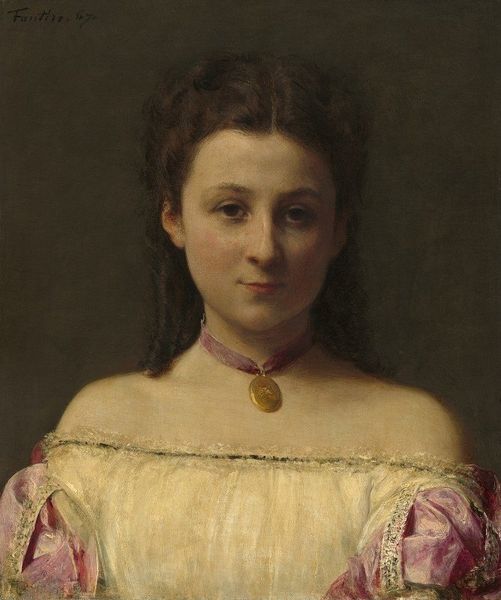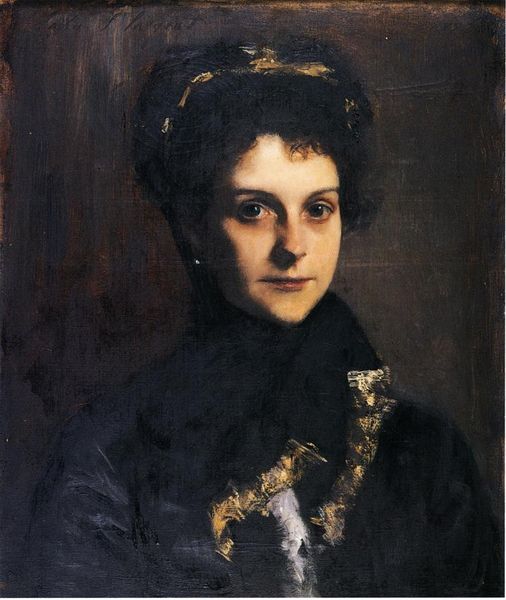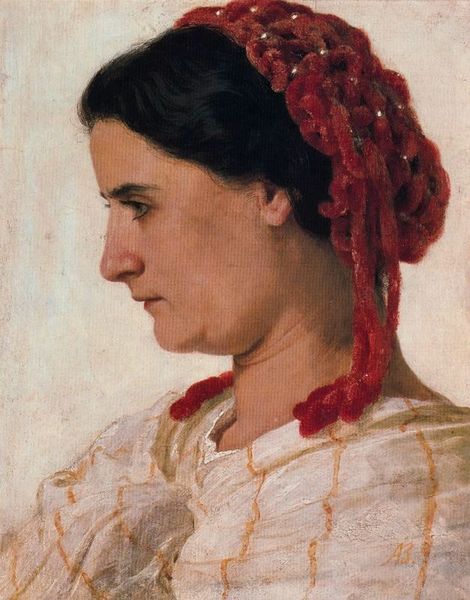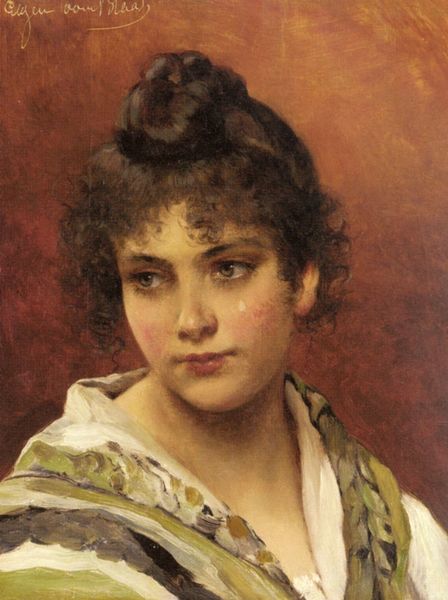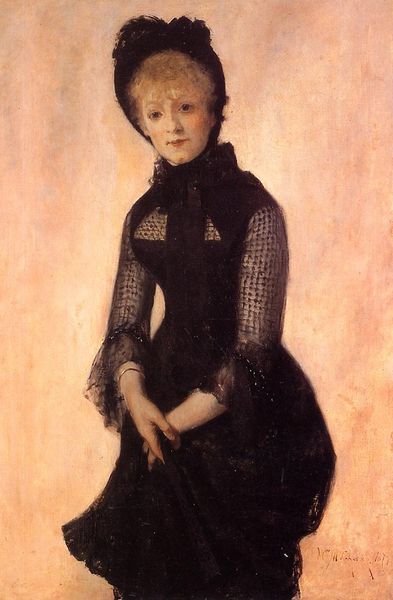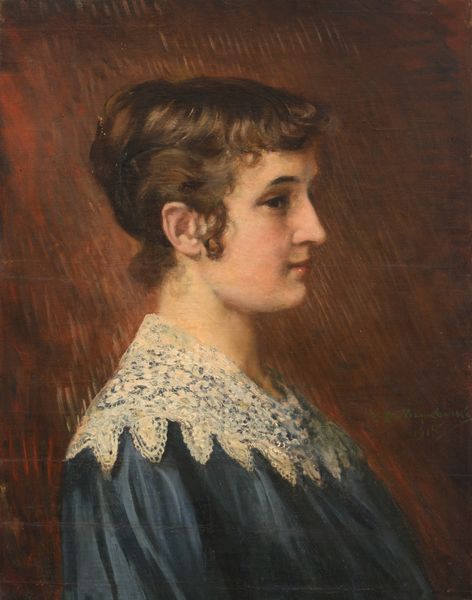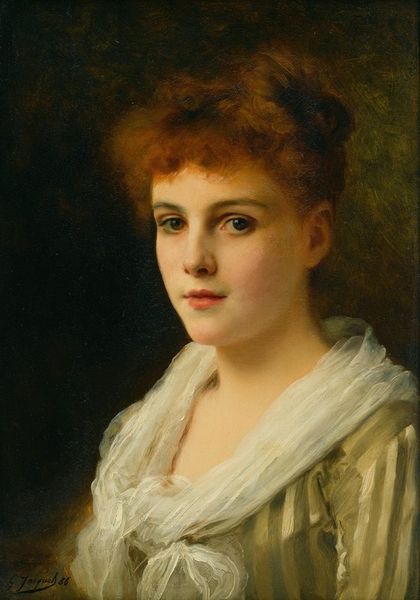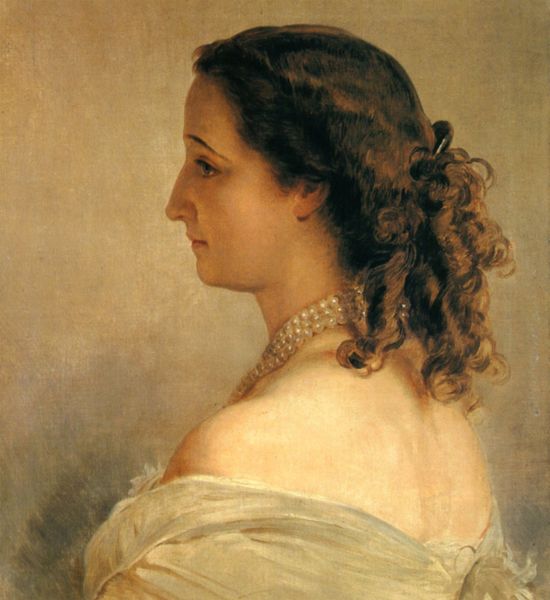
painting, oil-paint
#
portrait
#
art-nouveau
#
painting
#
oil-paint
#
oil painting
Copyright: Public domain
Editor: Here we have Gustav Klimt’s oil painting, "Emilie Flöge, Aged 17," from 1891. I’m struck by its delicate quality and the sitter's composed expression. How should we interpret this portrait in its historical moment? Curator: Well, considering the painting’s origins, what do you observe about its visual presentation and who gets represented in such a manner? Does Klimt portray Flöge in a manner fitting social expectations for women in Vienna at the time, or perhaps subverting them? Editor: I see a fairly conventional profile, almost demure in its presentation, yet her gaze is steady, self-possessed. How did Klimt's portrayal contribute to, or deviate from, existing portraiture conventions of the era, especially concerning young women? Curator: Klimt's earlier works, before his more avant-garde style fully blossomed, often adhered to the tastes of the Viennese bourgeoisie who commissioned portraits. So the 'demureness' you notice points to those established norms around portraying women—especially those of marriageable age from ‘good’ families. Yet the fact that she is presented at all indicates a certain status afforded to the Flöge family. Does knowing that she became a pioneering fashion designer change how you perceive the image now? Editor: That’s a great point! Knowing about her later life and career does make me see her gaze as a little more forward-thinking, as if there's a hint of her future self in that expression. It reframes my interpretation. Curator: Exactly. The painting then becomes more than just a depiction of a young woman; it hints at future possibilities, both for her and perhaps for the evolving role of women in Viennese society as seen through the lens of Klimt's art. Editor: This has certainly given me a deeper understanding of Klimt's early style and how social context shaped the image. Curator: And hopefully, made you think more deeply about who gets represented, and why.
Comments
No comments
Be the first to comment and join the conversation on the ultimate creative platform.
